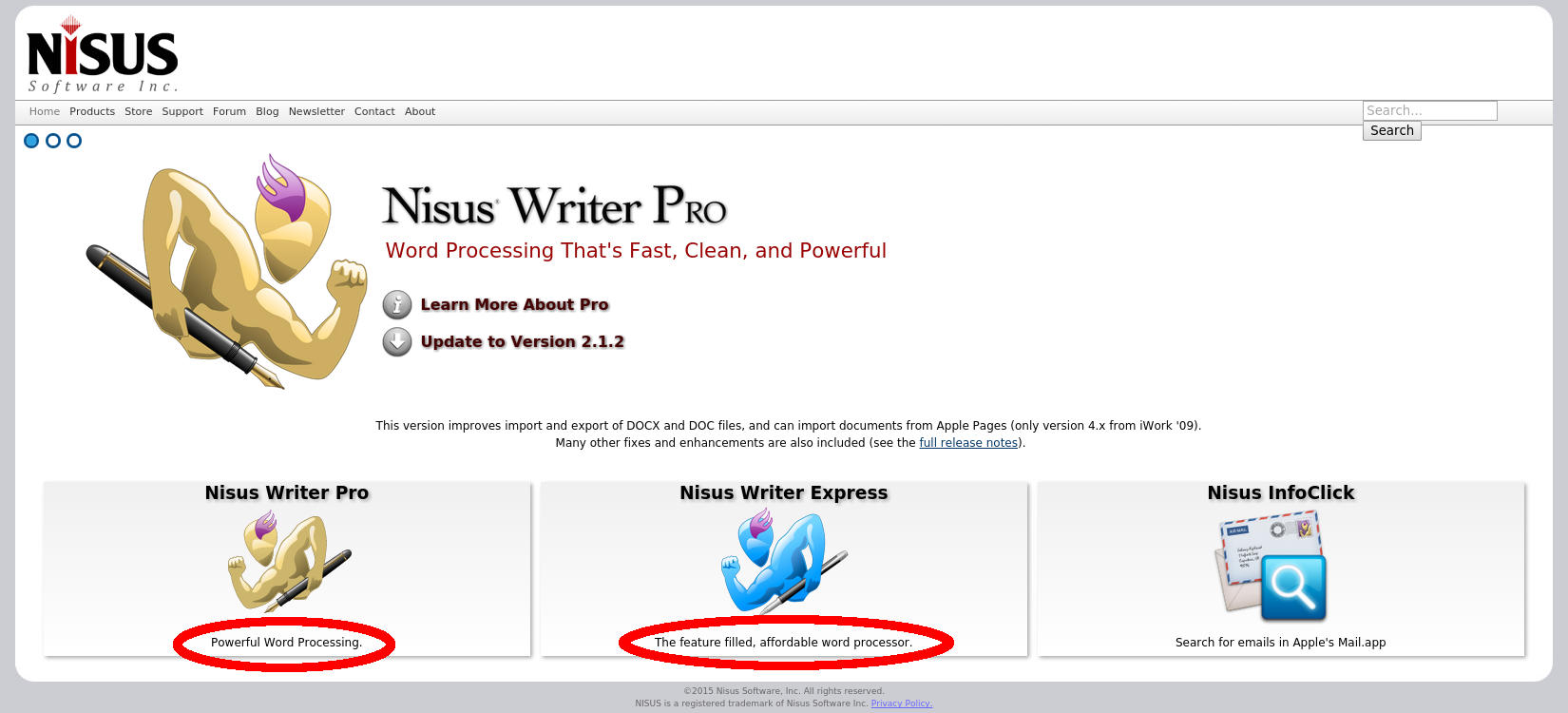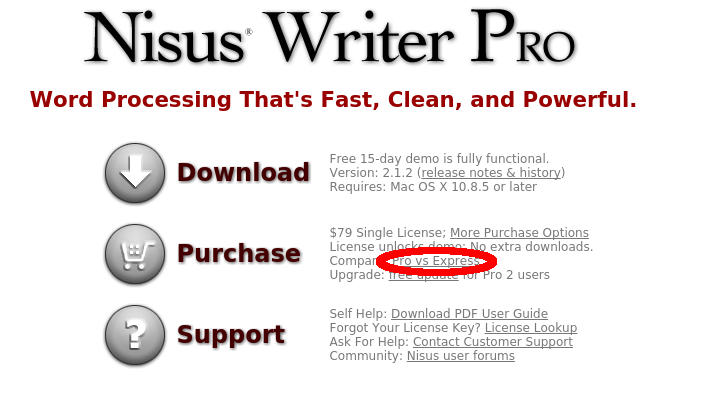Tip: Tell Customers Why They Should Spend More Money
Monday, October 12, 2015
Seth Godin mentioned his favorite word processor (Nisus Writer) in a recent blog post. As someone who thinks that the phrase "favorite word processor" makes about as much sense as "favorite thumbtack supplier," I was eager to take a look. After all, Godin has written eighteen times as many books as I have, so he must know a thing or two about the matter.
Truth be told, I never got around to installing it. I was entirely too focused on the company's positioning and pricing. Let's take a look at the company's homepage. I've circled two sections in red.

The first rule of positioning is that if you want a potential customer to buy a higher priced item, you should make the higher priced item look better than the lower priced item. Does "powerful" really seem that much better than "feature filled?" Not really. I can easily imagine companies using "feature filled" as the tagline for top tier products. In fact, it's a little awkward to say that a higher priced product has more features than the one that you describe as "feature filled." Note: it's generally a better idea to sell benefits rather than features.
Without the ability to compare the prices or functionality of the two products, there is really no way for a potential customer to understand the difference between the two products and thus no reason for him to select the higher priced offering. The only clue that there is any difference at all are the names "pro" and "express."
In fact, the only way to find an explanation of the differences between the two packages is to select one, look for the section labeled "purchase" and click a grayed-out link that says "Compare: Pro vs Express."

Price tiering can be an incredible method to increase profits and appeal to new customers, but as I've said before, if the differences between tiers aren't obvious, they won't help much. I'd go further and say that due to the paradox of choice, consumers will be more likely to buy nothing than to be tempted to make a purchase at all.
Bonus tip: After a bit of investigation, I noticed that a license for the "Express" version Nisus Writer is only $20. Users can upgrade from that version to "Pro" for a one-time fee of $49 (a total cash outlay of $69). The "Pro" version by itself costs $79. I can't imagine any rational reason why any company would want to make it cheaper for users to buy and upgrade from a lower tier than to buy the upper tier version outright.
The typical approach is to provide greater discounts to those who take on more risk when purchasing your products. A customer who has used your "express" version and wishes to upgrade risks very little. He's already familiar with your product and has been impressed by it. Now compare him to a potential customer of the "Pro" package. Not only is he risking more money, but he's never used your software before. He has no idea about the level of value that you offer. Why would you ask him to pay more when he is less likely to pay?
Pricing and positioning are not easy, but a little work can lead to significantly greater profits. If you'd like to improve your business strategy, contact us for a consultation.